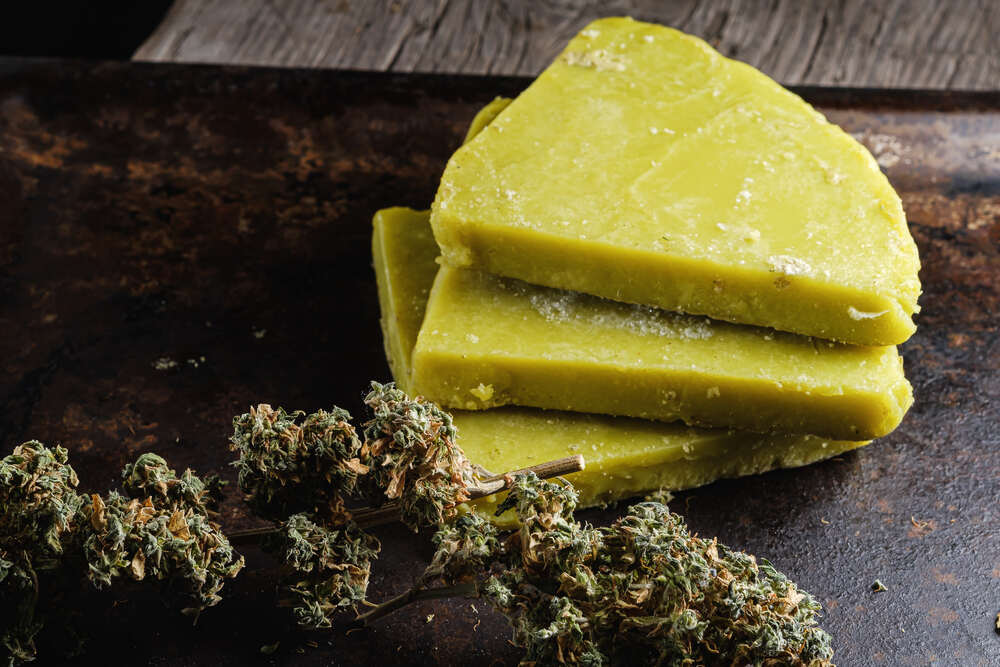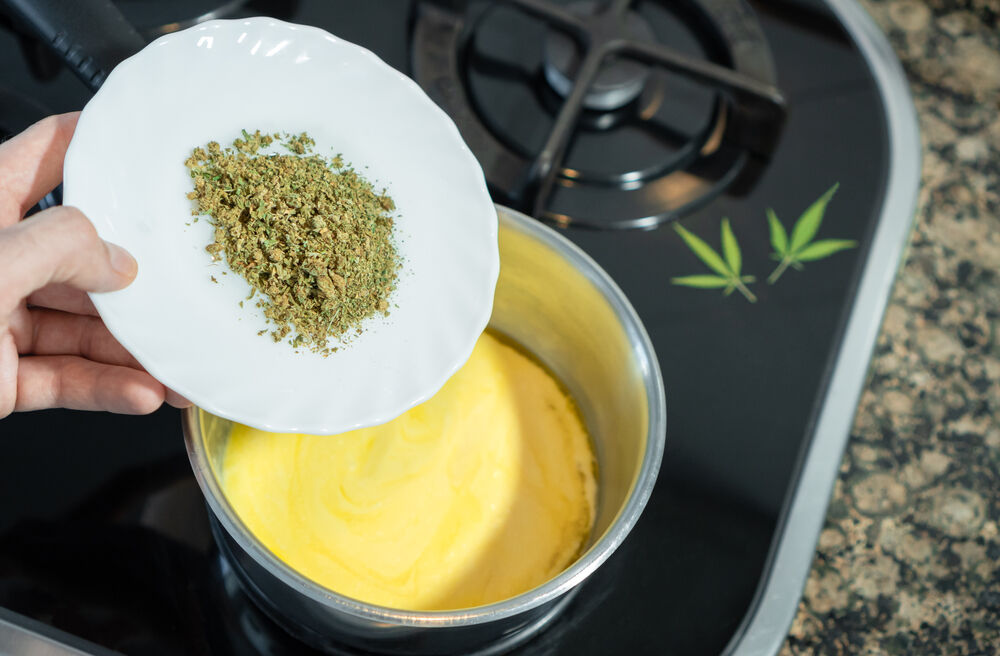The Best Fluffy Pancakes recipe you will fall in love with. Full of tips and tricks to help you make the best pancakes.

How to Make Cannabis Butter
When it comes to cooking with cannabis, making cannabutter is a game-changer. Not only does it allow you to infuse cannabis into countless recipes, but it also gives you control over potency, flavors, and dosage. Whether you’re new to edibles or looking to level up your creations, this guide will walk you through everything you need to learn. So let’s get into the process – grab your favorite strain, some butter, and let’s make some potent cannabutter magic!
What is Cannabis Butter?
Cannabis butter is exactly what it sounds like: regular butter infused with cannabis. It’s a versatile ingredient that can be used in many recipes – think brownies, cookies, sauces, and even savory dishes. Cannabutter provides a simple way to dose your edibles since you can measure it out like regular butter. Plus, it offers a fun, tasty method to enjoy the effects of weed without smoking.
Understanding cannabutter and its uses
Cannabutter is often the first step for anyone diving into homemade edibles. The butter absorbs cannabinoids like THC or CBD, which are released when you consume it. You can spread it on toast, mix it into smoothies, or bake it into treats. Once you’ve made a batch, the culinary possibilities are endless.
Key benefits of using cannabis butter
Cannabutter is:
- Discreet: no need for smoking or vaping
- Versatile: add it to both sweet and savory dishes
- Long-lasting: the effects can last a few hours compared to inhaling cannabis
Difference between cannabis butter and other cannabis infusions
While cannabutter is a classic, there are other options for cooking with cannabis, like oils and tinctures. Butter has a high-fat content, which helps bind with cannabinoids effectively, making it a popular choice. Oils like coconut or olive oil work too, but butter is more versatile for traditional baking recipes.

Ingredients and Equipment Needed
Essential ingredients for cannabis butter
Here’s what you’ll need:
- 1 cup unsalted butter
- 1 cup of water
- 7–10 grams of cannabis flower, ground
These proportions are easy to scale up or down depending on how strong you want your butter to be.
Kitchen tools required
To make cannabutter, gather these tools:
- A baking sheet (for decarboxylating)
- Saucepan or double boiler (for melting butter)
- Cheesecloth (for straining)
- Airtight container (for storing the butter)
Tips for selecting the best cannabis strain
For the best cannabutter, choose a strain based on your desired effects. Sativa-dominant strains are uplifting and energizing, perfect for daytime treats. Indica strains are more relaxing and best for edibles you’ll enjoy in the evening. If you’re after a balanced experience, try a hybrid.
How to Prepare Cannabis for Butter
Decarboxylation: What it is and why it’s important
Decarboxylation is the secret to potent cannabutter. Raw cannabis won’t get you high on its own; it has to be “decarbed” to activate the THC. This process involves heating the cannabis at a low temperature, transforming THCA into THC, the compound that brings the effects you’re after.
Step-by-step guide to decarboxylating cannabis
- Preheat your oven to 245°F (120°C).
- Break up your cannabis into small pieces and spread it on a baking sheet.
- Bake for 30-40 minutes, stirring occasionally.
- Let it cool – you’re ready to infuse.
Common mistakes to avoid during decarboxylation
Watch your temperature – too high and you’ll destroy cannabinoids; too low, and the THCA won’t fully convert to THC. Also, make sure you grind the cannabis coarsely, not too fine, to avoid burning.
Step-by-Step Process to Make Cannabis Butter
Combining cannabis with butter: Heat and infusion basics
Place your butter and water in a saucepan or double boiler, heating gently until melted. Then add your decarbed cannabis. The water helps prevent the butter from scorching, so don’t skip this part!
Stirring and simmering: How to get the perfect consistency
Simmer the butter mixture on low for 2-3 hours, stirring occasionally. Keep it on the lowest heat possible to avoid burning. You’ll know it’s ready when the butter takes on a greenish hue and the kitchen smells herbal and buttery.
Straining cannabis butter for smoothness
To strain, line a bowl with cheesecloth and carefully pour the mixture through. Gather up the cheesecloth and gently squeeze out the butter. Avoid pressing too hard to prevent excess plant matter from getting into your butter.
Cooling and storing your cannabis butter
Pour your strained butter into an airtight container. Pop it in the fridge until it solidifies. The water will separate to the bottom – once it hardens, you can scoop off the water and be left with pure cannabutter.
Dosage Tips for Cannabis Butter
Calculating THC or CBD content in homemade butter
Calculating exact potency can be tricky, but a general rule is about 10% THC content from your starting material. For example, if you use 10 grams of cannabis at 15% THC, your butter will contain roughly 1500 mg of THC in total. Divide it by the servings to figure out your dose.
How to adjust the potency
If you want milder butter, use less cannabis; for stronger butter, use more. Another trick is to blend cannabutter with regular butter to create a lower-potency option.
Safe starting dosage for new users
If you’re new to edibles, start with about 5–10 mg of THC per serving. It’s better to go slow – you can always eat more, but you can’t eat less!
How to Use Cannabis Butter in Recipes
Popular recipes and dishes using cannabis butter
Cannabutter works in any recipe that calls for regular butter. Classic options include brownies, cookies, and muffins. You can also add it to mashed potatoes, pasta, or popcorn for savory options.
Tips for cooking with cannabis-infused butter
Low and slow is the key when cooking with cannabutter. High temperatures can degrade THC, so keep your cooking temp under 350°F (175°C) to preserve potency.
Dos and don’ts for preserving potency while cooking
Do:
- Add cannabutter at the end of cooking if possible
- Mix it with regular butter to control the dose Don’t:
- Fry with cannabutter – high heat breaks down THC
- Let your cannabutter sit out; keep it refrigerated for freshness
Storing Cannabis Butter
Best storage practices for freshness and potency
Store your cannabutter in an airtight container in the fridge for up to two weeks, or in the freezer for longer storage. Light and air can degrade cannabinoids, so keep it covered and cool.
How long cannabis butter lasts in the fridge and freezer
Cannabutter lasts:
- 2 weeks in the fridge
- Up to 6 months in the freezer
Signs your cannabis butter has gone bad
If you notice a sour smell, discoloration, or mold, it’s time to toss it. Fresh cannabutter will smell earthy, not rancid.
FAQ:
What strain of cannabis is best for making butter?
Choose strains based on desired effects; sativas for energy, indicas for relaxation, and hybrids for balance.
How long should I cook cannabis butter?
Simmer cannabutter on low for 2-3 hours, stirring occasionally to ensure proper infusion without burning.
Can I make cannabis butter without decarboxylating?
Decarboxylating activates THC. Skipping it results in weaker butter with fewer psychoactive effects.
What is the shelf life of cannabis butter?
Cannabutter lasts 2 weeks in the fridge and up to 6 months in the freezer when stored properly.
How much cannabis should I use for a batch of butter?
Use around 7–10 grams per cup of butter for moderate potency; adjust to preference.
Cannabutter is a simple and versatile way to enjoy cannabis-infused edibles. With the right steps and a little patience, you can create butter that enhances your favorite recipes with ease. Just remember to start slow with dosing, store it properly, and have fun experimenting with new flavors and effects. Happy cooking, and enjoy the journey!





Thanks for the guide, extremely helpful and well explained.
Excellent instruction. Worked very very well!🙂